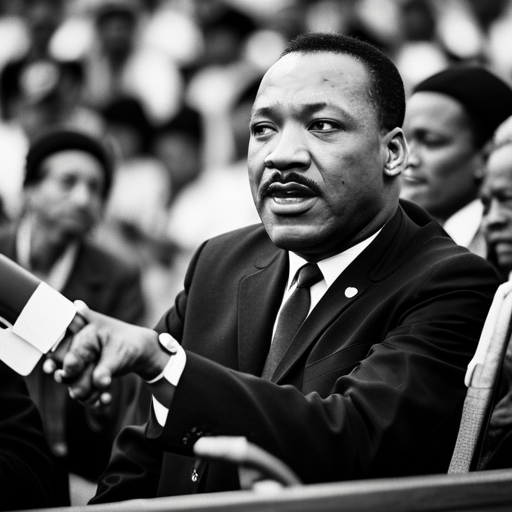Have you ever pondered why Freud emphasized dream symbols associated with sexual topics? It may appear coincidental, but there are deeper reasons for his focus on this subject.
Sigmund Freud, the renowned Austrian neurologist, developed his psychoanalytic theory during a time when sexuality was a topic of great societal taboo and repression. This historical context undoubtedly influenced his thinking and the emphasis he placed on sexual symbols in dreams.
Freud believed that dreams were a window into the unconscious mind, where our hidden desires and repressed thoughts reside. By examining these dreams, particularly those with sexual symbols, Freud believed he could uncover the deep-seated conflicts and desires within individuals.
This emphasis on sexuality in dreams was a way for Freud to explore the complexities of the human psyche and shed light on the unconscious expression of our desires. While Freud’s theories have garnered both praise and criticism, they have undeniably shaped the field of psychology and continue to influence our understanding of dreams and the human mind.
Key Takeaways
- Freud’s emphasis on dream symbols related to sexual matters was influenced by the societal taboo and repression towards sexuality during his time.
- Freud believed that dreams provided a window into the unconscious mind where hidden desires and repressed thoughts reside, and he viewed sexual symbols in dreams as a manifestation of these underlying psychological processes.
- Freud’s emphasis on sexual symbols in dreams was rooted in his belief that sexuality is a fundamental driving force in human behavior, and that the libido, or sexual energy, plays a significant role in shaping our desires and fantasies.
- Freud argued that analyzing dream symbols related to sexual matters can provide insight into an individual’s emotional state, psychological development, and early experiences of gratification and frustration in relation to sexual desires.
Freud’s Historical Context and Influences
Freud’s intense focus on dream symbols related to sexuality stems from the societal taboos and repressed attitudes towards sex during his time, making his theories all the more intriguing and controversial.
In order to understand why Freud placed such emphasis on sexual matters in dreams, it is crucial to consider the historical context in which he lived. During the late 19th and early 20th centuries, Victorian values and moral codes heavily influenced society’s perception of sex, labeling it as taboo and shameful. This repression of sexual desires created an undercurrent of curiosity and fascination, which Freud tapped into with his psychoanalytic theories.
Additionally, influential figures such as Darwin and Nietzsche, who challenged traditional beliefs and explored the human psyche, further shaped Freud’s thinking. By delving into the forbidden realm of sex and dreams, Freud sought to uncover the hidden meanings behind our subconscious desires.
Transitioning into Freud’s psychoanalytic theory, we can explore how these repressed sexual urges manifest in our dream symbolism.
Freud’s Psychoanalytic Theory
In Freud’s psychoanalytic theory, he emphasizes the role of the unconscious mind. He believed that the unconscious mind plays a pivotal role in shaping our thoughts, emotions, and behavior. According to Freud, the unconscious mind contains repressed memories, desires, and instincts that influence our conscious experiences.
Additionally, Freud placed great importance on the symbolism found in dreams. He suggested that dreams are a reflection of our unconscious desires and conflicts. By analyzing these symbols, Freud believed that we can gain insight into our hidden desires and unresolved issues.
The Role of the Unconscious Mind
Explore the depths of your own unconscious mind and discover the raw power of hidden desires. The unconscious mind, according to Freud’s psychoanalytic theory, plays a crucial role in shaping our thoughts, emotions, and behaviors. It is a vast reservoir of repressed memories, instincts, and wishes that influence our conscious experiences.
Dreams, as Freud believed, are the royal road to the unconscious, providing a glimpse into the hidden realms of our psyche. Through symbolism in dreams, the unconscious mind expresses its forbidden desires and unresolved conflicts. Symbols act as a disguise, allowing these repressed thoughts to slip past the conscious mind’s defenses. By deciphering these symbols, Freud argued that we gain insight into our deepest fears, fantasies, and motivations.
Understanding the role of symbolism in dreams is paramount in unraveling the complexities of the human mind, as we will explore in the subsequent section on the importance of symbolism in dreams.
The Importance of Symbolism in Dreams
Symbols in dreams are like hidden keys that unlock the door to our subconscious, allowing us to gain profound insights into the depths of our own minds. Freud believed that dream symbols were not to be taken literally, but rather, they should be subject to symbolic interpretation. According to his psychological analysis, dream symbols represented unconscious desires and conflicts that were too threatening or unacceptable to be expressed directly. By analyzing these symbols, Freud believed that we could gain a deeper understanding of our unconscious thoughts and desires. He argued that dreams provided a safe space for these desires to be expressed, without the fear of judgment or consequence. Freud’s emphasis on sexual matters in dream symbolism can be seen as a reflection of his belief in the unconscious expression of desires. By exploring these sexual symbols, Freud believed that we could uncover hidden desires and unresolved conflicts.
Freud’s Belief in the Unconscious Expression of Desires
By delving into the unconscious expression of desires, you can better understand why Freud placed such significant emphasis on dream symbols related to sexual matters.
Freud believed that dreams were a window into the unconscious mind, where our deepest desires and fears reside. According to his theory, dreams are a manifestation of repressed sexual urges and fantasies that we’re unable to express in our waking lives.
Through the interpretation of symbols in dreams, Freud believed that we could uncover the hidden meaning behind these desires. He saw sexual symbols as representations of our unconscious desires, with each symbol having a specific meaning that could be decoded.
For Freud, the exploration of sexual symbols in dreams was a way to gain insight into the inner workings of the human psyche. This understanding of dream symbolism laid the foundation for Freud’s interpretation of sexual symbols in dreams, which we’ll explore in the next section.
Freud’s Interpretation of Sexual Symbols in Dreams
Freud’s belief in the unconscious expression of desires laid the foundation for his interpretation of sexual symbols in dreams. According to Freud’s psychoanalytic theory, dreams serve as a window into the unconscious mind, where repressed desires and impulses are allowed to manifest.
The emphasis on sexual symbolism in Freud’s dream analysis can be attributed to his view that sexuality is a fundamental driving force in human behavior. By interpreting sexual symbols in dreams, Freud believed that he could uncover hidden desires and unresolved conflicts. However, it is important to note that Freud’s interpretation of sexual symbols in dreams isn’t meant to be taken literally. Instead, it is a metaphorical representation of underlying psychological processes.
Understanding these symbols can provide valuable insights into the complexities of the human psyche. Moving forward, let’s delve into Freud’s views on sexuality and its role in shaping the human psyche.
Freud’s Views on Sexuality and the Human Psyche
In exploring Freud’s views on sexuality and the human psyche, two key points emerge:
- The concept of the libido and the role of the pleasure principle.
- The libido, or sexual energy, is seen as a driving force that motivates human behavior and shapes our desires and fantasies. Freud believed that this energy is present from birth and undergoes various stages of development, influencing our psychological growth.
- The pleasure principle, on the other hand, refers to the instinctual need for immediate gratification and the avoidance of pain.
- These two concepts intertwine to shed light on the profound influence of sexual energy on our psychological development.
The Libido and the Pleasure Principle
Explore the power of your desires and the pursuit of pleasure that shapes your dreams. According to Freud, the libido, or sexual energy, plays a fundamental role in the human psyche. It is this libido that fuels our desires and influences our dreams.
Freud believed that the pleasure principle, which seeks immediate gratification of our instincts, governs our behavior and motives. In our dreams, this principle is unleashed, allowing us to indulge in our deepest and most hidden fantasies.
Sexual matters, being a primal instinct, hold a significant place in our desires and therefore become prominent symbols in our dreams. These symbols serve as a way for our unconscious mind to express and explore our repressed sexual urges.
By analyzing these symbols, Freud believed we could gain insight into the influence of sexual energy on psychological development, leading us to the subsequent section about the impact of sexual energy on our subconscious.
The Influence of Sexual Energy on Psychological Development
Freud’s emphasis on dream symbols related to sexual matters stems from his belief in the profound influence of sexual energy on psychological development. According to Freud, sexual energy, or libido, is a fundamental driving force that shapes our emotional and cognitive experiences. He argued that our earliest experiences of gratification and frustration in relation to our sexual desires play a crucial role in shaping our personalities and self-identities.
Freud believed that the development of healthy emotional and psychological functioning is intricately intertwined with the successful resolution of sexual conflicts and the attainment of sexual satisfaction. Therefore, dream symbols that relate to sexual matters are seen as important indicators of an individual’s emotional state and psychological development. Understanding and interpreting these symbols can provide valuable insights into the individual’s unconscious desires, fears, and conflicts.
This lays the groundwork for exploring the subsequent section on society’s taboos and sexual repression.
Society’s Taboos and Sexual Repression
Don’t shy away from society’s taboos and embrace the fact that sexual repression is a reality we all face. Society’s norms and cultural beliefs have shaped our attitudes towards sexuality, often leading to the suppression of sexual desires and the creation of taboos. Freud believed that these taboos and the resulting sexual repression had profound psychological consequences. He argued that by repressing our sexual instincts, we create inner conflicts and unresolved desires that manifest in our dreams. Freud saw dreams as a way for our unconscious mind to express these repressed sexual desires in symbolic form. By interpreting these symbols, Freud believed that we could gain insight into our unconscious thoughts and desires. However, Freud’s emphasis on sexual matters in dream analysis was controversial and sparked much debate. Nonetheless, his theories have left a lasting impact on the field of psychology. Transitioning into the subsequent section about Freud’s controversial legacy, his theories on dream analysis continue to be both influential and divisive.
Freud’s Controversial Legacy
Freud’s impact on the field of psychology remains both influential and divisive, as his theories continue to spark debate and shape the way we understand the human mind. Freud’s emphasis on dream symbols related to sexual matters is one of the aspects of his work that has drawn significant attention and criticism.
While Freud believed that dreams were a manifestation of repressed desires and unconscious thoughts, his focus on sexual symbolism has been seen by some as overly reductionistic and narrow. Critics argue that Freud’s preoccupation with sexual interpretations may have overshadowed other possible meanings and symbols within dreams. Moreover, Freud’s theories have been challenged by alternative interpretations and approaches in psychoanalysis, which offer different perspectives on the significance of dream symbols.
Transitioning into the subsequent section about ‘alternative interpretations of dream symbols‘, it is important to consider the diverse range of perspectives that exist within the field of psychoanalysis.
Alternative Interpretations of Dream Symbols
Freud’s controversial legacy has sparked ongoing debates about the validity of his theories. However, it is important to consider alternative interpretations of dream symbols, especially when it comes to their connection to sexual matters. While Freud heavily emphasized the sexual aspect of dream symbols, some psychologists argue that these symbols might represent a broader range of subconscious desires. By exploring alternative interpretations, we can gain a deeper understanding of the complexity of the human mind and its hidden motivations. To illustrate this point, consider the following table:
| Freud’s Interpretation | Alternative Interpretation |
|---|---|
| Dream about a snake | Fear of betrayal |
| Dream about falling | Lack of control |
| Dream about flying | Desire for freedom |
| Dream about teeth falling out | Anxiety about appearance |
These alternative interpretations highlight the diverse meanings that dream symbols can hold, beyond their sexual connotations. They suggest that dreams serve as a gateway to our unconscious thoughts and desires, providing valuable insights into our psychological well-being. Understanding this can lead to a more comprehensive understanding of the human psyche.
With these alternative interpretations in mind, we can now delve into the evolution of Freud’s theories and how they have shaped modern psychology.
The Evolution of Freud’s Theories
Now let’s explore how Freud’s theories have evolved over time and how they’ve shaped modern psychology.
The evolution of Freud’s ideas has been a fascinating journey, as his theories have undergone significant revisions and adaptations. Initially, Freud placed a heavy emphasis on dream symbols related to sexual matters, believing that they were the key to unlocking the unconscious mind. However, as the field of psychology advanced, alternative interpretations of dream symbols emerged, challenging Freud’s singular focus on sexuality.
Today, Freud’s theories have evolved to encompass a broader understanding of the human psyche, incorporating concepts such as defense mechanisms, the Oedipus complex, and the unconscious mind. While his emphasis on sexual matters may seem outdated to some, Freud’s theories have undeniably influenced modern psychology, laying the foundation for the study of the unconscious and the exploration of the human mind.
Transitioning into the subsequent section about the enduring influence of Freud’s work, it is clear that his contributions continue to shape the field of psychology to this day.
The Enduring Influence of Freud’s Work
In discussing the enduring influence of Freud’s work, it’s important to consider the legacy of psychoanalysis in modern psychology.
Despite criticisms and advancements in the field, many concepts and techniques developed by Freud continue to shape our understanding of the human mind.
Furthermore, Freud’s theories still spark debates and discussions among psychologists, highlighting the ongoing relevance and impact of his work.
The Legacy of Psychoanalysis in Modern Psychology
Although controversial, psychoanalysis has left a lasting impact on modern psychology, shaping the way we understand the human mind and behavior. Its modern applications are extensive and diverse, ranging from therapeutic interventions to research methodologies.
Psychoanalytic techniques, such as free association and dream analysis, are still used today in psychotherapy. They provide a deeper understanding of clients’ thoughts, emotions, and behaviors.
Freud’s emphasis on the unconscious mind has inspired researchers to explore implicit biases, automatic processes, and unconscious motivations. These studies have expanded our knowledge of human cognition and behavior.
While psychoanalysis has made significant contributions, it has faced criticism for its lack of empirical evidence and its focus on subjective interpretations. Some argue that its concepts are too abstract and difficult to test scientifically.
Despite its enduring influence, there are ongoing debates surrounding Freud’s ideas. Researchers and scholars continue to discuss and refine his theories, contributing to the evolution of psychoanalysis.
Transitioning into the next section, the legacy of Freud’s work sparks ongoing debates and discussions about the relevance and applicability of his theories in the modern era.
Continued Debates and Discussions on Freud’s Theories
Engage in ongoing debates and discussions as scholars and researchers refine Freud’s theories, exploring their relevance and applicability in the modern era.
Remember, the proof is in the pudding, and through rigorous examination, we can uncover valuable insights about the human psyche.
Freud’s theories have faced criticisms and critiques over the years, with some arguing that his emphasis on sexual matters in dream symbols is outdated and limited. However, others argue that Freud’s theories still hold contemporary relevance and offer valuable perspectives on the human mind.
Despite the controversies surrounding Freud’s theories, it is undeniable that they have had a significant cultural impact and shaped the reception of psychology in popular culture.
Whether one agrees or disagrees with Freud, his theories continue to spark intellectual discourse and contribute to our understanding of the complexities of the human psyche.
Frequently Asked Questions
How did Freud’s historical context and influences shape his emphasis on dream symbols with sexual content?
Freud’s emphasis on dream symbols with sexual content can be understood through his historical context and influences. In the late 19th century, Victorian society was marked by strict sexual repression and taboo. Freud, influenced by the ideas of philosophers like Nietzsche and Schopenhauer, sought to challenge these societal norms.
His emphasis on sexual symbols in dreams can be seen as a rebellious act, aimed at exposing and exploring the hidden desires and repressed sexuality of individuals. By doing so, Freud aimed to bring about a greater understanding of the human psyche and promote personal liberation.
What are the key principles of Freud’s psychoanalytic theory that support his belief in the unconscious expression of desires in dreams?
Freud’s psychoanalytic theory is based on key principles that support his belief in the expression of unconscious desires in dreams.
One principle is the existence of the unconscious mind, which contains repressed thoughts and desires.
Another principle is the idea that dreams serve as a form of wish fulfillment, allowing individuals to fulfill their forbidden desires in a safe, symbolic manner. This explains Freud’s emphasis on dream symbols with sexual content, as sexuality is often a deeply repressed and taboo desire.
How did Freud interpret sexual symbols in dreams and what were his main arguments for their significance?
Freud’s interpretation of sexual symbols in dreams and their significance in psychoanalysis were shaped by his historical context and key principles of his psychoanalytic theory. He believed that dreams were expressions of repressed desires from the unconscious mind.
Sexual symbols, according to Freud, represented deeper, hidden desires and conflicts. His emphasis on sexual matters in dreams can be attributed to the conservative society of his time, which suppressed discussions on sexuality.
This led Freud to explore the hidden meanings behind sexual symbols in dreams as a means of understanding the unconscious mind.
What were Freud’s views on sexuality and its relationship to the human psyche, and how did these views contribute to his emphasis on sexual symbols in dreams?
Freud’s emphasis on sexual symbols in dreams was influenced by his views on sexuality and its relationship to the human psyche, as well as his historical context and societal taboos.
One interesting statistic is that Freud believed that sexual energy, or libido, was a primary driving force behind human behavior. He argued that repressed sexual desires could manifest in dreams as symbols, allowing the unconscious mind to express and explore these taboo desires.
This belief shaped his emphasis on sexual symbols in dreams and his interpretation of their significance.
How did society’s taboos and sexual repression during Freud’s time influence his theories and his emphasis on sexual symbols in dreams?
The influence of societal repression and Freud’s cultural context greatly impacted his theories and emphasis on sexual symbols in dreams. During Freud’s time, society had strict taboos and sexual repression, which led to the suppression of sexual desires and fantasies.
Freud believed that dreams were a manifestation of unconscious desires and repressed thoughts. Therefore, he placed significant emphasis on sexual symbols in dreams as a way to uncover and understand these hidden desires and their psychological significance.
Conclusion
In conclusion, Freud’s emphasis on dream symbols related to sexual matters can be attributed to a combination of his historical context, psychoanalytic theory, and belief in the unconscious expression of desires.
While controversial, Freud’s interpretation of sexual symbols in dreams was a reflection of his views on sexuality and the human psyche. However, alternative interpretations of dream symbols have emerged over time, and the evolution of Freud’s theories continues to shape our understanding of the unconscious mind.
Regardless of one’s stance on Freud, his work has undeniably left an enduring influence on the field of psychology.









